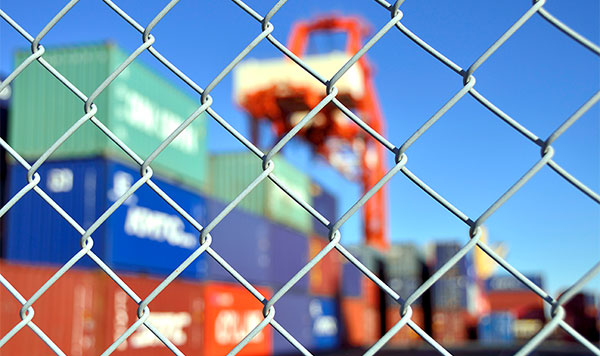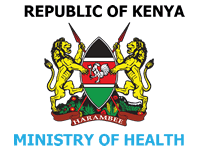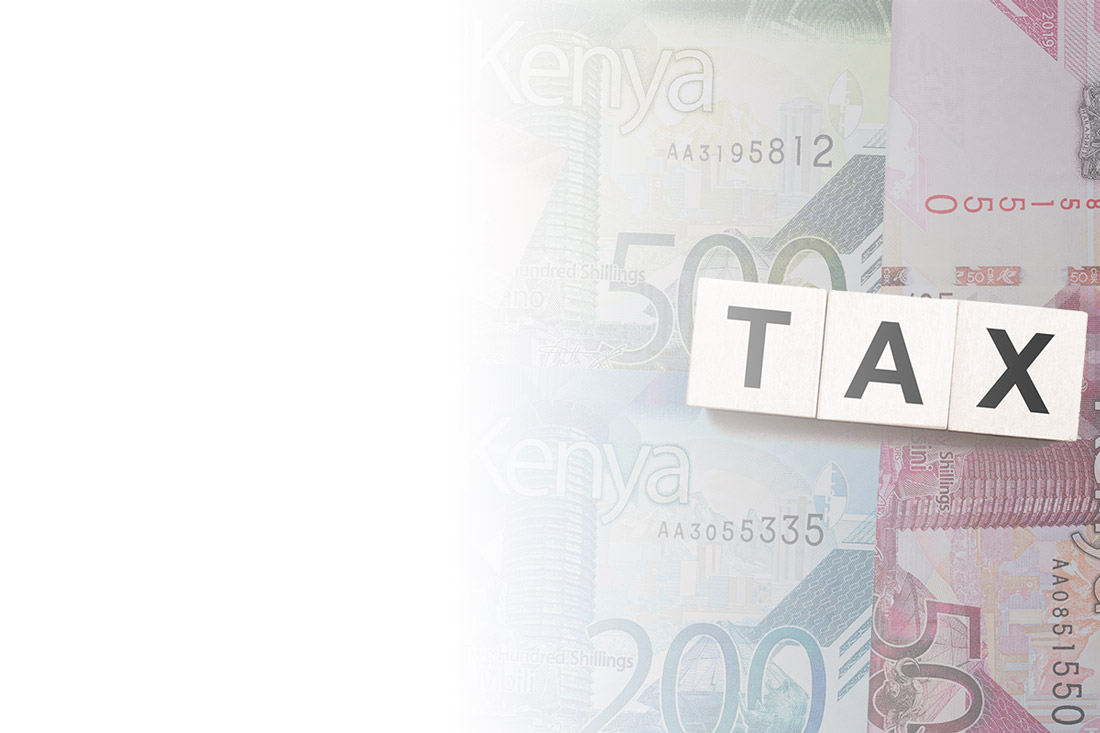
Tobacco Taxation in Kenya
Kenya’s tobacco tax policies score low when compared to best practice. In 2021, Kenya scored 0.88 out of 5 on the Tobacconomics scorecard, where 5 is best practice.
The industry-backed tiered tobacco tax policy adopted in 2017, which replaced the previous uniform tax structure introduced in 2015, largely minimized the effectiveness of taxes as a tobacco control tool in Kenya.
The implementation of the Excise Goods Management System in 2014 has contributed to a decrease in illicit trade in tobacco products from 15% in 2003 to 5% in 2016.
As such, increased illicit trade can no longer be used as a counter argument against effective tobacco taxation in Kenya.The page provides insights on the tobacco taxation policy in Kenya and highlights its impact on prices of tobacco products, consumer habits, health, and government revenues. In addition, it demystifies the illicit trade arguments used by the tobacco industry to oppose tax increases. The key datasets for these analyses were sourced from the Kenya Revenue Authority (KRA) and the Kenya Global Adults Tobacco Survey 2014.
Increasing tobacco taxes is the most cost-effective method of reducing tobacco consumption. Higher taxes raise the retail price of tobacco products and make them less affordable. They also increase government revenue. In low and middle-income countries, studies have shown that increasing the price of cigarettes by 10% leads to an average 8% decrease in tobacco demand.
However, the structure of the tobacco tax regime greatly determines its effectiveness in achieving public health and revenue goals, with simple, uniform tax structures typically having a greater impact than more complicated tax structures.Types of Tobacco Taxes
Excise taxes:
- Ad valorem taxes are levied on the value of the product (e.g., a percentage of the cost, insurance, and freight (CIF) or the ex-factory price).
- Specific taxes are charged based on quantity (e.g., KES 1,200 per 1,000 cigarettes).
Uniform or Tiered (Differential) tax
- Uniform excise tax rates are applied to tobacco products at the same rate, regardless of the different characteristics that may apply to them (price level, size, type of packaging, with or without filter, etc.). Uniform taxes can be either specific or ad valorem taxes.
- A tiered excise tax varies based on factors such as price, cigarette length, presence of a filter, or a manufacturer’s productive capacity. A tiered tax can apply to both specific and ad valorem excise taxes.
Other tobacco taxes
- Value-added taxes (VAT), general sales taxes, duties on tobacco product imports and/or exports, and/or other special taxes or levies.
To ensure that cigarettes become less affordable over time, some countries make regular adjustments to specific excise taxes. At a minimum, these adjustments should account for the effect of inflation. These tax adjustments may also take into account income trends, and at times, an additional exogenous tax increase, to raise the prices of tobacco products.
Evolution of Tobacco Taxation in Kenya
Tobacco tax policy in Kenya has changed frequently over the years due to tobacco industry lobbying.
Four specific progressive tiers based on price
Year
Excise Tax Rates (KES per Mille)
2003-2004
2005
2006
2007
450-1,400
495-1,540
495-1,650
500-2,000
Legend:
Policy
Tax System
* Progressive tax tiers are tax rates that increase (or progress) as the cigarette price increases. Mille refers to 1000 cigarette sticks.
Section 12 of the Tobacco Control Act 2007 requires the Minister in charge of Finance to adopt tobacco taxation policies that contribute to reducing tobacco use in Kenya. The changes to Kenya’s tobacco taxation policy over the years have reduced its effectiveness as a tobacco control tool.
Between 2007 and 2015, Kenya had a tiered tax system, where the tax rates for the various tiers were based on the physical characteristics of cigarettes as well as their retail selling price (RSP).
In 2015, the tax policy changed to a uniform specific excise tax on all tobacco products and the taxes were adjusted annually for inflation.
This brought Kenya’s tobacco tax policy in line with the best practices recommended by the World Health Organization (WHO). As a result of this tax change, the prices of tobacco products increased. In addition, a tax on e-cigarettes was introduced.In April 2017, the tax structure was once again changed to a tiered system, where the two tiers were based on the physical features of the cigarettes (i.e., filtered and unfiltered cigarettes).
This change came about due to heavy lobbying by the tobacco industry.In 2019, there was a 14.1% increase in the taxes levied on tobacco, with further inflationary adjustments of 4.94% in 2020
and 4.97% in 2021. Currently, the tax system is still based on two tiers (filtered and unfiltered cigarettes). Cigars, cheroots, cigarillos, and e-cigarettes are taxed at a separate rate. In July 2022, taxes were increased by 10% for filtered and non filtered cigarettes. In addition, an inflationary adjustment of 6.3% took effect on 1st October 2022.Ranking of Kenya’s Tobacco Tax Policies
Kenya’s tobacco tax policies score low when compared to best practices and other countries globally.
Tobacco Taxation Country Score
The lower the score, the weaker the tax structure
- Tobacco Taxation Score|
- 0 - 0.4
- 0.5 - 0.99
- 1 - 1.49
- 1.5 - 1.99
- 2 - 2.49
- 2.5 - 2.99
- 3 - 3.49
- 3.5 - 3.99
- 4 - 4.49
- 4.5 - 5
- No Data
Source: Tobacconomics, 2021
In 2021, Kenya scored 0.88 out of 5 on the Tobacconomics Tax Scorecard.
Kenya’s score is lower than the average score for middle-income (1.78) and lower-middle-income (1.42) countries as well as the African region (1.36). Within East Africa, Rwanda (1.63) and Burundi (1.38) performed better than Kenya in 2021.Based on WHO’s biannual ‘Report on the Global Tobacco Epidemic’, the Tobacconomics Tax Scorecard uses a five-point scale to score cigarette tax policy and outcomes. Four main indicators are measured, namely; i) cigarette price, ii) share of retail cigarette prices that are accounted for by taxes, iii) change in cigarette affordability, and iv) tax structure. The score ranges from 0-5, where a score of 0 indicates a very poor tobacco tax regime and a score of 5 indicates a tax regime that implements the best practices.
Cigarette Tax Scorecard Key Components
Cigarette Price (2014-2020)
Change in Affordability (2014-2020)
Share of Taxes (2014-2020)
Tax Structure (2014-2020)
The components of Kenya’s tobacco tax policy that have a low score and need improvement are change in affordability (score of 0 from 2014-2020), share of tax in RSP (dropped from 1.5 in 2018 to 0.5 in 2020), and tax structure (drastically declined from 4 in 2016 to 1 in 2020).
This section analyses the impact of Kenya’s tobacco taxation policies on the price of cigarettes, their affordability over time, the demand for tobacco products, health outcomes from tobacco use, and government revenue from tobacco taxes. It compares the past with projections based on 2 scenarios drawn from the Tobacco Excise Tax Simulation Model (TETSiM) developed for Kenya.
In both scenarios, we assume that the tobacco industry overshifts the excise tax by raising the retail selling prices (RSPs) by between 20% and 25%, a higher margin than the increase in the excise taxes. In effect, tobacco firms pass on the additional cost to consumers. We assume an overshift of the tax because overshifting is likely to occur in markets with a single company, or a limited number of companies
as is the case in Kenya.Tobacco Excise Tax Simulation Model (TETSiM) Scenarios
Scenario 1:
- This is the status quo.
- Assumption: tobacco excise taxes do not increase over the next five years (except to incorporate annual inflationary adjustments).
- Cigarettes become more affordable, tobacco consumption increases, and associated health burdens rise over the next five years.
Scenario 2:
- This is the recommended tax policy for Kenya.
- Assumption: the tobacco excise tax increases by the sum of the inflation rate, the gross domestic product (GDP) growth rate, and 10% each year. The aim is to reduce the affordability of tobacco over time.
- Tobacco consumption drops, prevalence rates decline, deaths are averted, and revenue increases if the recommended tax rates are adopted.
Between 1990 and 2018, the real (inflation-adjusted) price of cigarettes in Kenya declined. The country’s tax policies did not have the desired impact on price.
Nominal and Real Prices of Sportsman Cigarettes (One Packet) in Kenya, (1990-2018)
Source – KNBS, 2022
The nominal price (the retail selling price that does not take inflation into account) for a packet of cigarettes has been increasing since 1990. However, the real price (adjusted for inflation) has been decreasing over the same period. The lack of significant adjustments in the tax structure that accounted for inflation and GDP growth between 2000 and 2018 allowed tobacco products to become more affordable to consumers in Kenya.
Effect of Tax Policy on Demand for Cigarettes in Kenya
Real Price Per Pack of the Most Sold Brand (2023-2028)
Total Consumption (All Brands Including Illicit: 2023-2028)
Note: Scenario 1: Status quo (no tax increases except annual inflationary adjustment). Scenario 2: Recommended tax policy (annual excise tax increases by the sum of the inflation rate, the GDP growth rate, and 10%)
Source: TETSiM, as at 19th April 2023.
In Scenario 1 (current tax policy is maintained), the real (i.e., inflation-adjusted) retail price of the most sold brand in Kenya slightly increases from KES 267 in 2023 to KES 309 by 2028. Despite this slight increase in price, consumption would rise from 192 million packs in 2023 to 216 million packs by 2028 due to growth of disposable incomes.
In scenario 2, however, real retail prices would increase by a higher margin, rising from KES 267 to KES 413 over the same period. In addition, consumption would decline from 192 million packs in 2023 to 171 million packs by 2028. In both scenarios, the assumption is that the industry is likely to increase their retail prices by more than the percentage change in the tax rate.
The methods of taxing novel tobacco products have changed since their introduction in 2015, as highlighted in the timeline below.
Excise Duty Act 2015
Product
Excise duty rate
E-cigarettes
KES 3,000 per unit
Cartridges
KES 2,000 per unit
Sources of the data in above timeline: Excise Duty Act 23 of 2015, Legal Notice 239 of 2018 (Excise Duty Act 2015); Finance Act 23 of 2019, Finance Act 2021/2022, Legal Notice 217 of 2021, Finance Act 2022/2023.
In Kenya, the tax on the eliquid refers to liquid nicotine for e-cigarettes. A large proportion of adolescents start using e-cigarettes because of the flavours in e-liquids rather than the nicotine content. E-cigarette dealers can evade taxes on the eliquid by selling liquid solutions that contain only flavors or are described as nicotine free.
The World Bank
therefore recommends that:- All e-liquids used in e-cigarettes should be taxed irrespective of whether they contain nicotine or not.
- The taxable products should be clearly defined to state what constitutes an e-cigarette product.
- Batteries, chargers, and charging cords if they are sold together with an e-cigarette product or if they are packaged together as one saleable item should be taxed.
- The tax should cover the various parts of the device, including the cartridges if sold separately.
- Enforcement agencies should carry out compliance checks of retailers selling novel products to ensure applicable taxes have been paid and untaxed products are seized.
To prevent tobacco traders from evading tax by misdeclaring e-devices and their accessories at ports of entry, Kenyan authorities should make use of the appropriate Harmonized System (HS) Codes outlined by the World Customs Organization. They should apply HS Code 2403 to classify e-devices (this code defines other manufactured tobacco and manufactured tobacco substitutes, homogenized or reconstituted tobacco, and tobacco extracts and essences). Conversely, the authorities should avoid using HS Code 3824 (which defines chemical products, including those consisting of natural ingredients) or HS Code 8543 (which defines electrical machines and other apparatus).
Illicit trade is the production, import, export, distribution, purchase, sale, or possession of a product that fails to comply with the law.
Illicit trade poses a serious threat to public health because it increases access to – often cheaper – tobacco products, thus fueling the tobacco epidemic and undermining tobacco control policies. It also substantially lowers government revenues and may contribute to the funding of international criminal activities.
Types of Illicit Tobacco Products in Kenya
There are two components of illicit tobacco trade in Kenya: (1) the illegal import (i.e., smuggling) of products, and (2) the evasion of domestic taxes. To unlawfully move tobacco products into the country, traders may avoid customs officials at official exit and entry points, bribe customs officials, use illegal crossing points, under-declare or under-value goods at import points, or make false declarations about the country of origin.
With respect to domestic tax evasion, traders may fraudulently declare cigarettes for export (only to sell the products tax free domestically), fail to declare the domestic production of cigarettes or the import of raw tobacco and finished products, misreport the value of products, or supply counterfeit cigarettes to the domestic market. All these methods are designed to avoid the payment of taxes.
There are various types of illicit tobacco products:
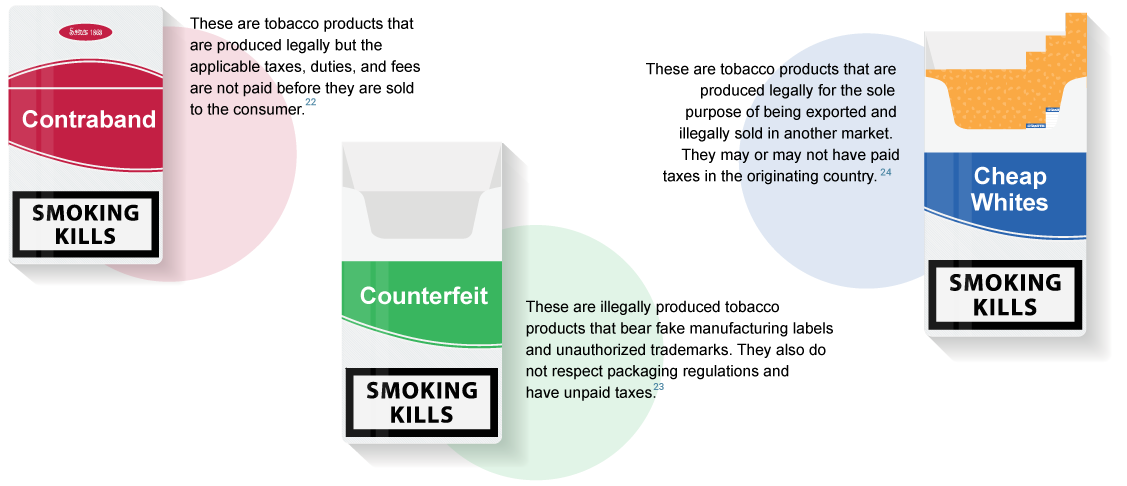
Ref 22
Ref 23 Ref 24Prevalence and Sources of Illicit Trade within the East Africa Region
Kenya, at 5%, has the lowest levels of illicit trade within the East African region. Uganda has the highest level at 20%.
Prior to the implementation of Kenya’s track and trace system, the illicit cigarette trade caused an estimated annual loss of KES 1 billion (US$11.3 million) in taxes.
A different source estimated the cost of illicit cigarette trade at KES 70 billion (US$ 790 million), taking into account tax revenue and job and investment losses. More than 47.7 million counterfeit cigarette sticks valued at KES 239 million (with an estimated lost tax revenue of KES 152 million) were seized by the KRA, Anti-Counterfeit Agency, and the Kenya Bureau of Standards between 2009 and 2013. Currently, most avenues of tax evasion, based on either imports or domestic production, have been sealed. The remaining 5% of illicit trade mainly occurs along Kenya’s western border with Uganda, and along Kenya’s southern border with Tanzania.The main sources and destinations of illicit trade within the East African region have evolved over time. The map shows the flow of illicit tobacco products within the region.
Illicit Tobacco Trade Flows within Eastern and Central Africa
Source:
World Bank Group, Confronting Illicit Tobacco Trade: A Global Review of Country experiences; Chapter on Kenya; https://thedocs.worldbank.org/en/doc/309651548434939248-0090022019/original/WBGTobaccoIllicitTradeKenya.pdf
Unholy Alliance; links Between Extremism and Illicit trade in East Africa’ a report by the Counter Extremism Project – https://www.counterextremism.com/content/unholy-alliance
Titeca, Kristof, Luk Joossens, and Martin Raw. “Blood Cigarettes: Cigarette Smuggling and War Economies in Central and Eastern Africa.” Tobacco Control 20, no. 3 (2011): 226–32. http://www.jstor.org/stable/41320110
Unholy Alliance; links Between Extremism and Illict trade in East Africa’ a report by the Counter Extremism Project – https://www.counterextremism.com/content/unholy-alliance
Global Initiative against Transnational Crime. Where there’s smoke, there’s fire: investigating the illicit cigarette trade from Tanzania to Kenya [Internet]. Global Initiative against Transnational Crime. 2021. [Cited 17 January 2023]. Available from: https://riskbulletins.globalinitiative.net/esa-obs-019/04-investigating-illicit-cigarette-trade.html
Kenya is both a source and a destination for illicit tobacco products. According to Interpol, Kenya is one of the production sites for cheap whites which are exported to other countries.
There have been press reports of Supermatch cigarettes sold in the Ugandan market with a ‘Made in Uganda’ label that were manufactured in Kenya but packed in Uganda. Further, these cigarettes are smuggled to the Democratic Republic of Congo (DRC) and back to Uganda. Evidence suggests that the proceeds of these sales in DRC are used to fund rebel groups. In Kenya, most avenues of illicit trade (covering both imports and domestic production) have been sealed since 2014.Kenyan Policy Measures to Counter Illicit Trade in Tobacco Products
Comprehensive interventions by the government of Kenya have been successful in reducing the levels of the illicit tobacco trade within the country. This paves way for increasing tobacco taxes to WHO-recommended levels to reduce affordability.
In 2003, the Kenyan government audited the domestic tobacco industry and discovered the various ways tax evasion was occurring, including undeclared production, products falsely declared for export, undeclared imports, underreported values, and counterfeit production.
The government adopted a series of measures, as shown in the timeline below:
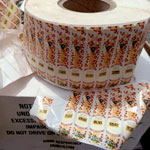
Paper Tax Stamps
There was a 52% rise in legal cigarette and cigar sales from 2003 to 2004 and an increase in monthly excise tax revenue from KES 230 million (approximately US$ 2.1 million) to KES 350 million (approximately US$ 3.2 million) over the period.
By 2005, tax evaders had begun to counterfeit tax stamps, causing a drop in revenue from the legal market and prompting the adoption of further reforms and closure of three domestic tobacco factories.This section addresses and counters the arguments the tobacco industry in Kenya uses to oppose tobacco tax increases. The industry’s arguments against tax increases are typically not supported by evidence or are greatly exaggerated.
These arguments are also intended to secure support from non-tobacco industry actors, such as trade unions, other business associations, tobacco growers, organizations concerned about minority rights and poverty, and policymakers concerned about social justice and the economic impact of tobacco taxes.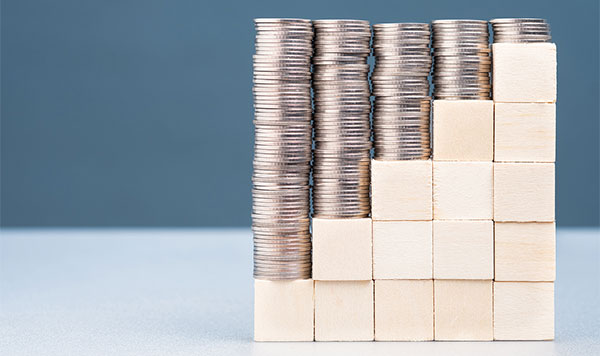
Myth: Cigarette tax increases will hurt the economy by reducing cigarette sales, tobacco-related employment, and retailer revenues.
Fact: Individuals that stop consuming cigarettes generate employment and boost revenues across other sectors as they have more money to spend on other products.

Myth: Regular increases in tobacco taxes that are pegged to inflation create an unpredictable regulatory environment and are a barrier to tobacco industry foreign direct investment.
Fact: The tobacco industry’s arguments are not intended to ensure steady government revenues. Rather, the industry aims to generate predictable sales volumes and profits.

Myth: High tobacco taxes are retrogressive and will hurt the poor by making the products expensive.
Fact: Tobacco use especially harms the poor.

Myth: By increasing tobacco taxes, the government unduly interferes with personal choice by denying smokers their right to smoke (‘nanny state’ argument).
Fact: The tobacco industry uses the ‘nanny state’ to rationalize its harmful commercial practices and deflect attention from its responsibility for the harm caused by tobacco products.
